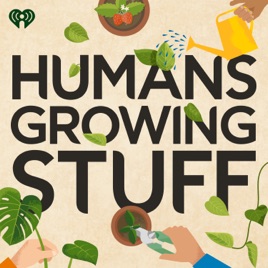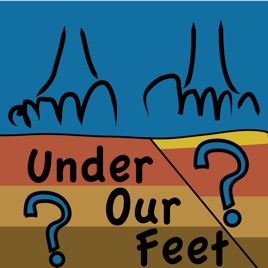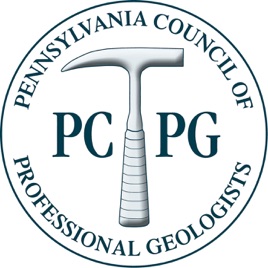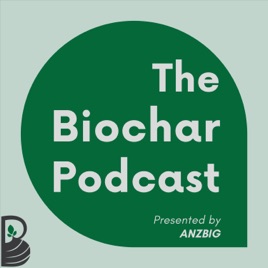
Advertise on podcast: Fossil Huntress — Palaeo Sommelier
Rating
5 from
Country
This podcast has
104 episodes
Language
Publisher
Explicit
No
Date created
2020/10/13
Average duration
17 min.
Release period
39 days
Description
Geeky Goodness from the Fossil Huntress. If you love palaeontology, you'll love this stream. Dinosaurs, trilobites, ammonites — you'll find them all here. It's dead sexy science for your ears. Want all the links? Head on over to Fossil Huntress HQ at www.fossilhuntress.com
Podcast episodes
Check latest episodes from Fossil Huntress — Palaeo Sommelier podcast
Dr. Victoria Arbour — Royal BC Museum Fieldwork at the Carbon Creek Basin Dinosaur Tracksite
2023/11/19
Victoria is a vertebrate palaeontologist and evolutionary biologist and is the leading expert on the palaeobiology of the armoured dinosaurs known as ankylosaurs. She has named several new species of ankylosaurs, studied how they used and evolved their charismatic armour and weaponry, and investigated how their biogeography was shaped by dispersals between Asia and North America.
British Columbia has a rich fossil record spanning over 500 million years of the history of life on Earth. Victoria’s research at the Royal BC Museum will investigate how the ancient plants and animals that lived here responded to changing climates, shifting continents, and mass extinctions.
The Carbon Creek Basin site is located just west of Hudson’s Hope in the Peace River area and boasts nearly 1,200 dinosaur tracks from at least 12 different types of dinosaurs—including two dinosaur track types that have not been observed at any other site in the Peace Region
more
Vancouver Island Mosasaur
2023/05/30
Vancouver Island holds many wonderful fossils and incredible folk excited to explore them. The Dove Creek Mosasaur, which includes the teeth and lower jawbone of a large marine reptile was discovered by Rick Ross of the Vancouver Island Palaeontological Society, during the construction of the Inland Highway, near the Dove Creek intersection on Vancouver Island, British Columbia.
Mosasaurs had a hinged jaw that allowed them to swallow prey larger than themselves. They evolved special pterygoid teeth projecting back into the roof of their mouths that acted as guards against escaping prey. The jawbones Rick found were exposed just up to the hinge. Given the size, this toothy fellow could have been as much as seven (7) metres long and weighed up to a tonne.
more
A Taste for Studies: Tortoise Urine, Armadillos, Fried Tarantula & Goat Eyeballs
2023/03/26
A Taste for Studies: Tortoise Urine, Armadillos, Fried Tarantula & Goat Eyeballs
While eating study specimens is not in vogue today, it was once common practice for researchers in the 1700-1880s. Charles Darwin belonged to a club dedicated to tasting exotic meats, and in his first book wrote almost three times as much about dishes like armadillo and tortoise urine than he did on the biogeography of his Galapagos finches.
One of the most famously strange scientific meals occurred on January 13, 1951, at the 47th Explorers Club Annual Dinner (ECAD) when members purportedly dined on a frozen woolly mammoth. The prehistoric meat was supposedly found on Akutan Island in Alaska, USA, by the eminent polar explorers' Father Bernard Rosecrans Hubbard, “the Glacier Priest,” and Captain George Francis Kosco of the US Navy.
This much-publicized meal captured the public’s imagination and became an enduring legend and source of pride for the Club, popularizing an annual menu of “exotics” that continues today, making the Club as well-known for its notorious hors d’oeuvres like fried tarantulas and goat eyeballs as it is for its notable members such as Teddy Roosevelt and Neil Armstrong.
The Yale Peabody Museum holds a sample of meat preserved from the 1951 meal, interestingly labeled as a South American Giant Ground Sloth, Megatherium, not Mammoth. The specimen of meat from that famous meal was originally designated BRCM 16925 before a transfer in 2001 from the Bruce Museum to the Yale Peabody Museum of Natural History (New Haven, CT, USA) where it gained the number YPM MAM 14399.
The specimen is now permanently deposited in the Yale Peabody Museum with the designation YPM HERR 19475 and is accessible to outside researchers. The meat was never fixed in formalin and was initially stored in isopropyl alcohol before being transferred to ethanol when it arrived at the Peabody Museum. DNA extraction occurred at Yale University in a clean room with equipment reserved exclusively for aDNA analyses.
In 2016, Jessica Glass and her colleagues sequenced a fragment of the mitochondrial cytochrome-b gene and studied archival material to verify its identity, which if genuine, would extend the range of Megatherium over 600% and alter views on ground sloth evolution. Their results showed that the meat was not Mammoth or Megatherium, but a bit of Green Sea Turtle, Chelonia mydas. So much for elaborate legends. The prehistoric dinner was likely meant as a publicity stunt. Glass's study emphasizes the value of museums collecting and curating voucher specimens, particularly those used for evidence of extraordinary claims. Not so long before Glass et al. did their experiment, a friend's mother (and my kayaking partners) served up a steak from her freezer to dinner guests in Castlegar that hailed from 1978. Tough? Inedible? I have it on good report that the meat was surprisingly divine.
Reference: Glass, J. R., Davis, M., Walsh, T. J., Sargis, E. J., & Caccone, A. (2016). Was Frozen Mammoth or Giant Ground Sloth Served for Dinner at The Explorers Club?. PloS one, 11(2), e0146825. https://doi.org/10.1371/journal.pone.0146825
more
Predators and Prey in Devonian Seas
2023/03/25
Predators and Prey in our Devonian Seas. It is here we see the first tetrapods — land-living vertebrates — appeared during the Devonian, as did the first terrestrial arthropods, including wingless insects and the earliest arachnids. In the oceans, brachiopods flourished. Crinoids and other echinoderms, tabulate and rugose corals, and ammonites were also common... and a mighty one-ton eating machine that ruled our ancient seas.
more
Earth’s First Four-Legged, Air-Breathing Vertebrates
2023/03/24
In the late 1930s, our understanding of the transition of fish to tetrapods — and the eventual jump to modern vertebrates — took an unexpected leap forward. The evolutionary a'ha came from a single partial fossil skull found on the shores of a riverbank in Eastern Canada.
Meet the Stegocephalian, Elpistostege watsoni, an extinct genus of finned tetrapodomorphs that lived during the Late Givetian to Early Frasnian of the Late Devonian — 382 million years ago.
Elpistostege watsoni — perhaps the sister taxon of all other tetrapods — was first described in 1938 by British palaeontologist and elected Fellow of the Royal Society of London, Thomas Stanley Westoll. Westoll's research interests were wide-ranging. He was a vertebrate palaeontologist and geologist best known for his innovative work on Palaeozoic fishes and their relationships with tetrapods.
As a specialist in early fish, Westoll was asked to interpret that single partial skull roof discovered at the Escuminac Formation in Quebec, Canada. His findings and subsequent publication named Elpistostege watsoni and helped us to better understand the evolution of fishes to tetrapods — four-limbed vertebrates — one of the most important transformations in vertebrate evolution.
www.fossilhuntress.com
more
North America’s Rocky Mountain Trench
2023/01/30
North America's Rocky Mountain Trench, also known as the Valley of a Thousand Peaks, is a large valley on the western side of the northern part of North America's Rocky Mountains. This massive rift valley stretches all the way from the British Columbia-Yukon border south to the St. Ignatius area and can be seen from space.
more
Oh, Shiny! Pyritized Fossils
2022/11/11
We sometimes find fossils preserved by pyrite. They are prized as much for their pleasing gold colouring as for their scientific value as windows into the past. If you have pyrite specimens and want to stop them from decaying, you can give them a 'quick' soak in water (hour max) then wash them off, and dry them thoroughly in a warm oven. Cool, then soak in pure acetone for a couple of days. Then soak in paraloid, a thermoplastic resin surface coating or acetone for a couple of days. Keep them in a sealed container with a desiccant pack afterwards to keep them dry — or leave them out on display to enjoy knowing that the decay will come in time. We do this with cut flowers so why not fossils sometimes? A friend gives her pyrite fossils on display a quick thumb wipe with vaseline or petroleum jelly. I'm not sure if the hydrocarbons there will play nice over time but they will act as a protective barrier.
more
Bitten and Smitten by the Mineral Bug
2022/11/10
This is a blast from the past and the tale of how I was bitten and smitten by the mineral bug. I hope you enjoy this story from my youth growing up on the northern end of Vancouver Island, British Columbia, Canada—and the minerals that can be found there.
more
Extinct Giants: Woolly Mammoths
2022/11/09
Extinct Giants: The Woolly Mammoths. These massive beasts roamed the icy cold tundra of Europe, Asia, and North America from about 300,000 years ago up until about 10,000 years ago making a living by digging through the snow and ice to get to the tough grasses beneath. The last known group of woolly mammoths survived until about 1650 B.C.—over a thousand years after the Pyramids at Giza were built. Will we bring them back? I cannot say for sure but they are a captivating animal in our Earth's history.
more
Fossil Gear: What to Bring Fossil Collecting
2022/11/08
Learn all about the gear you might need out in the field fossil collecting. What you'll need depends on where you collect and what time of year you go but this will get you started and set up for success.
more
Hunting Ichthyosaurs in the Norwegian Archipelago of Svalbard
2022/11/07
Join in for a chilly visit to the Norwegian archipelago of Svalbard between mainland Norway and the North Pole. This one of the world’s northernmost inhabited areas with rugged terrain, glaciers and polar bear. The rocks here house beautiful Triassic ammonoids, bivalves and primitive ichthyosaurs.
To see some of the fossils from here, visit: https://fossilhuntress.blogspot.com/2020/12/ammonoids-and-bivalves-of-svalbard.html
more
The Weird and the Wonderful: Lessons from the Cambrian
2022/09/26
Joe Moysiuk is a palaeontologist and evolutionary biologist, with research interests in macroevolution, evolutionary developmental biology, and the origin of animal life. He has extensive experience with fossils from the Burgess Shale of British Columbia, Canada, one of the world’s most significant fossil sites.
As part of his continuum of Burgess Shale-related research, he is currently pursuing a PhD focusing on the earliest evolution of today’s most diverse animal group: the arthropods.
Link to Video of the Talk on ARCHEA: https://youtu.be/4UZ-QwgDozk
more
Podcast reviews
Read Fossil Huntress — Palaeo Sommelier podcast reviews
Podcast sponsorship advertising
Start advertising on Fossil Huntress — Palaeo Sommelier & sponsor relevant audience podcasts
You may also like these earth sciences Podcasts

4.4
194
26
Humans Growing Stuff
iHeartPodcasts

2
1
82
AstroGeo
Karl Urban und Franziska Konitzer

4.8
30
157
The Plant a Trillion Trees Podcast
Eva Monheim

4.7
18
456
Earth911.com's Sustainability In Your Ear
Mitch Ratcliffe

5
13
63
Minds Behind Maps
Maxime Lenormand

5
41
24
Under Our Feet
Rudy Molinek

4.4
8
16
PCPG's A Poorly Sorted but Well Rounded Series
Pennsylvania Council of Professional Geologists

4.9
219
181
Eat For The Planet with Nil Zacharias
Eat For The Planet

4.8
4
11
The Biochar Podcast
ANZBIG

5
6
40
碳笑风生
Shangwei, MInghao



